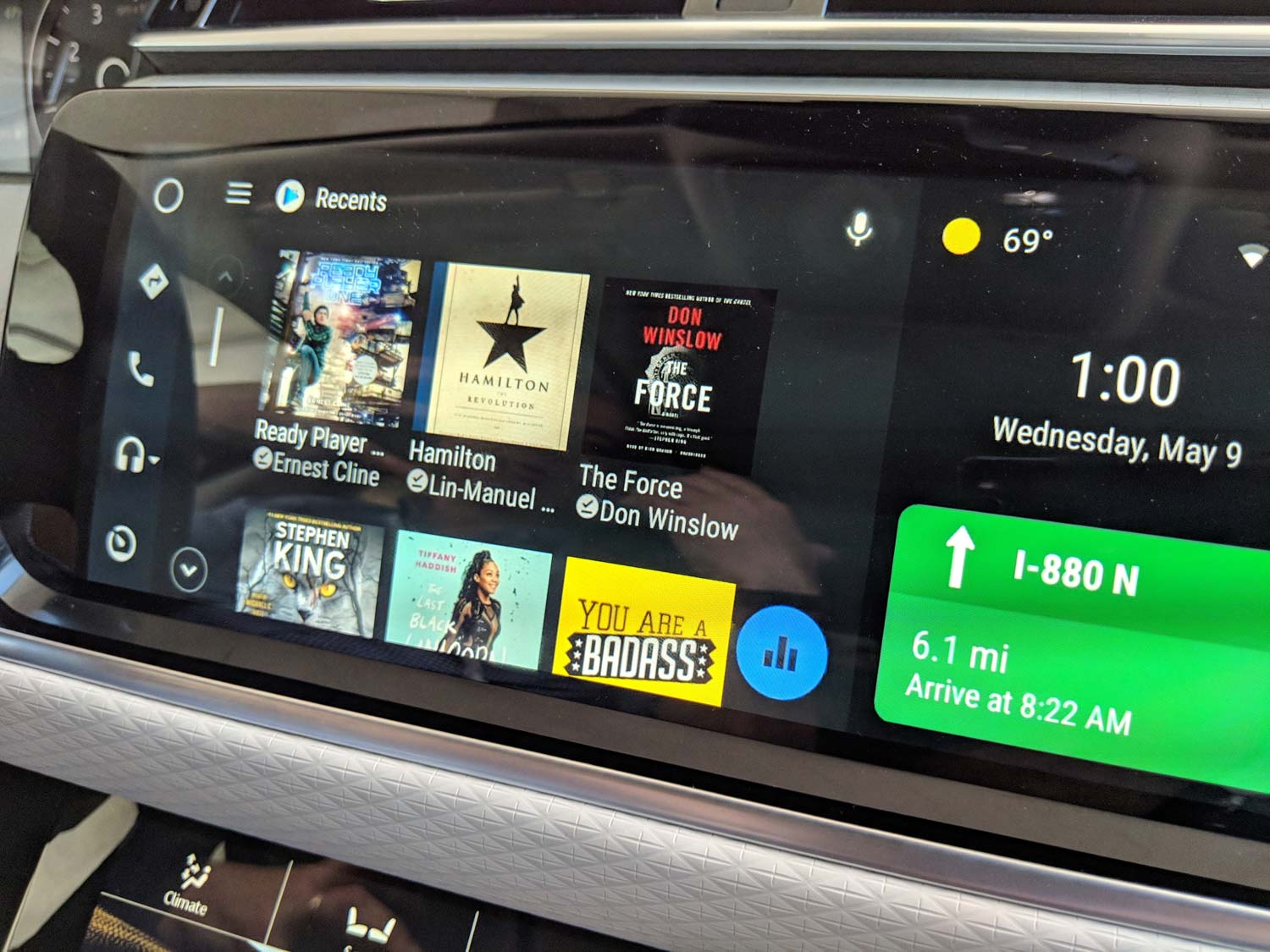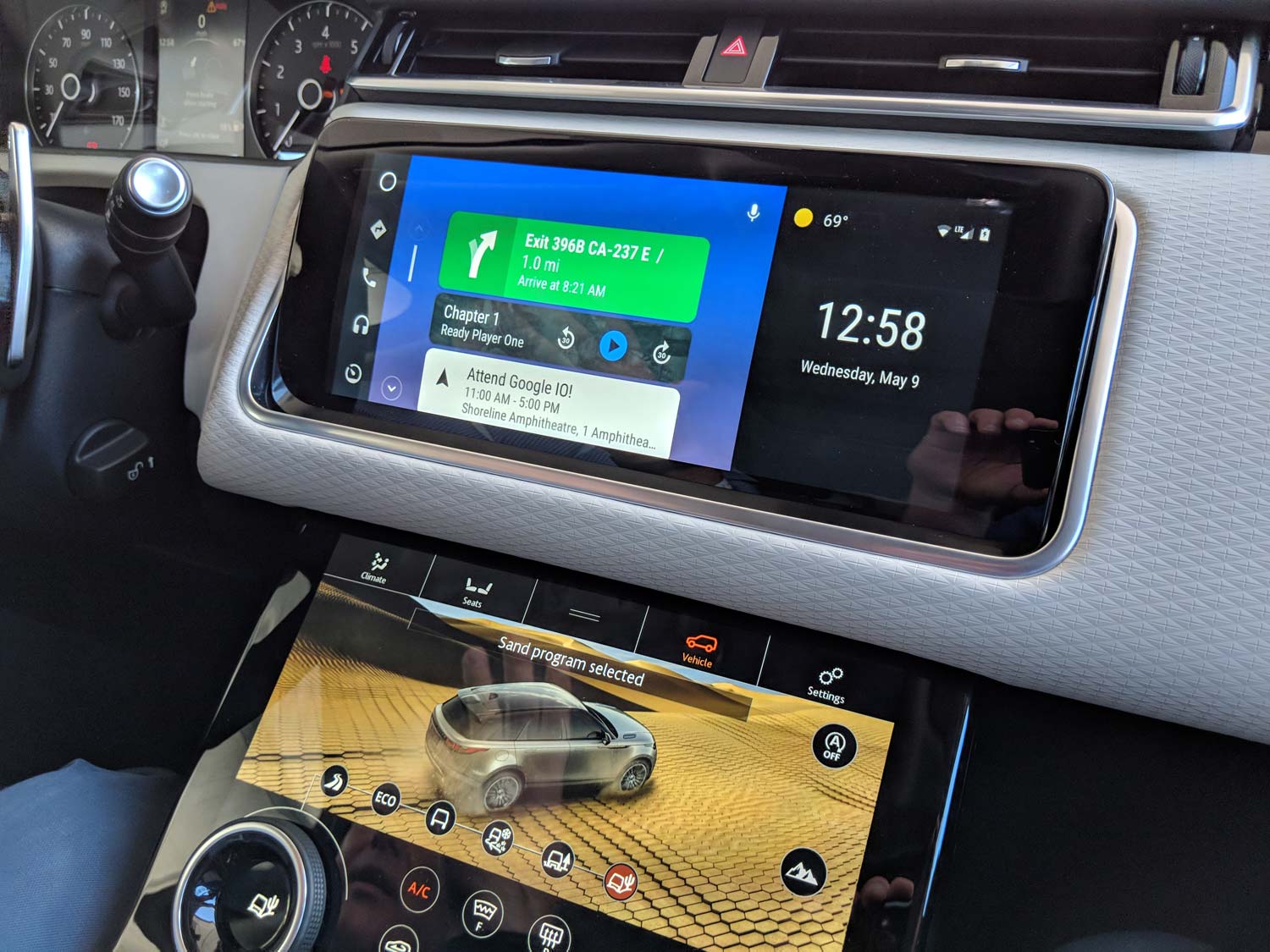New Android Auto Hands-On: These Are the Biggest Upgrades
Google's new features for its automotive platform let you manage music and messages without taking your eyes off the road.
MOUNTAIN VIEW, California — Android Auto faces a unique challenge: Pack more features into Google's platform for vehicle infotainment systems without forgetting that a driver's primary focus is to drive without distraction. New Android Auto features due this summer try to keep that balance by improving management of everything from music to messages.

Take Android Auto's improved media app, which I got to see in a demonstration inside a Range Rover Velar during the Google I/O conference this week. This car tapped into Android Auto features by connecting its infotainment system to an Android phone (a feature introduced by Google in 2016).
When we launched the media app, the first thing that popped up on the Range Rover's infotainment system was a menu filled with album and audiobook covers, giving me an at-a-glance view of the different things I could listen to. Google calls this approach "content-forward browsing."
MORE: Android Auto FAQ: Everything You Need to Know
If I looked closely — ideally when the car was stopped or parked — additional metadata could tell me if a particular piece of music or an audiobook had already been downloaded, so that I would know that playback would continue regardless of how strong my cellular connectivity was.
Android Auto's search function will see improvements, too, with Google Assistant letting drivers use voice commands to look for albums, songs and artists. Searches also summon up related content on the infotainment panel. After we asked Google Assistant to play a J.J. Cale song on Spotify, the assistant obliged — but the infotainment display also showed other songs, albums and related artists we could select.
As for messaging, Google says it is improving the notification layer and adding support for group messages. A text that popped up on the Range Rover's infotainment display made it clear who was texting, who was included on the message and — since we were parked — a small preview of the text. (If we had been driving, the Google Assistant would have offered to read the message aloud instead.) Messaging is also moving to the RCS standard at the heart of Google's new Chat mobile messaging efforts.
Get instant access to breaking news, the hottest reviews, great deals and helpful tips.

The infotainment panel in the Range Rover Velar is wider than what you might see in other automobiles, giving Google a chance to show off a widescreen redesign in the Android Auto interface.
Menu items letting you toggle between navigation, media playback and taking hands-free telephone calls now appear in a vertical strip on the left side of the display — closer to the driver, a Google rep told me — while the main display is flanked by a secondary screen on the right. That means if you've got the media app in the main screen, the secondary portion of the display can still show something like navigation information.

Those aren't the only Android Auto changes Google was showing off at I/O. The company replaced the built-in infotainment system on a Dodge Ram truck with a Google-designed alternative (above) to showcase how Google Services like Maps and the Play Store can be integrated into embedded systems running Android Auto.
This isn't just a pie-in-the sky concept, either: Just before Google I/O, Volvo announced that its Sensu infotainment systems in future cars will incorporate Google Services. Volvo had previously pledged to use Android Auto to power its in-car systems.
Image Credits: Tom's Guide
Philip Michaels is a Managing Editor at Tom's Guide. He's been covering personal technology since 1999 and was in the building when Steve Jobs showed off the iPhone for the first time. He's been evaluating smartphones since that first iPhone debuted in 2007, and he's been following phone carriers and smartphone plans since 2015. He has strong opinions about Apple, the Oakland Athletics, old movies and proper butchery techniques. Follow him at @PhilipMichaels.

